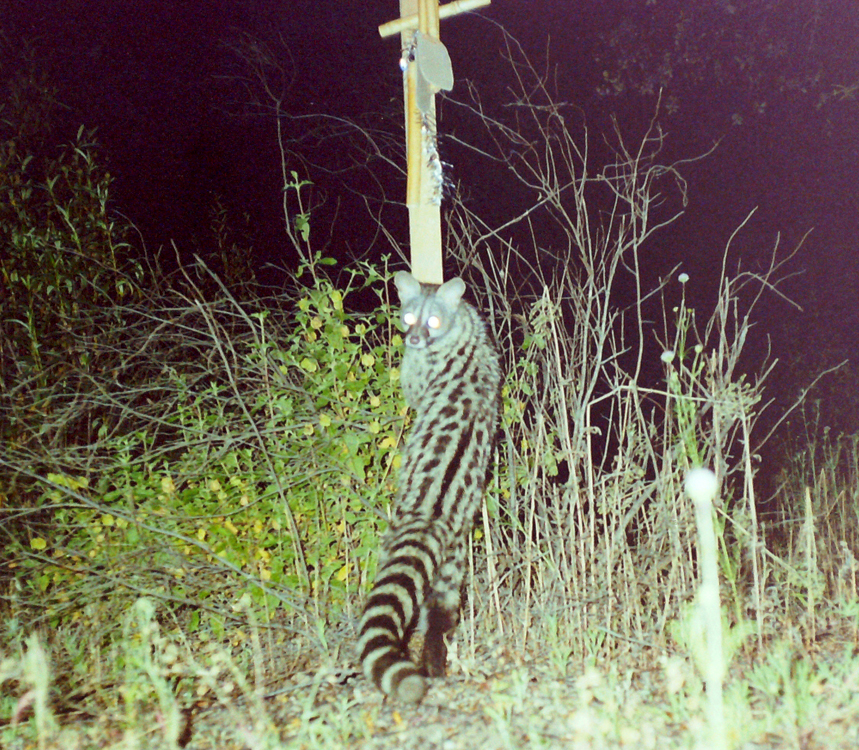Whereas high lure specificity for mammal monitoring is often sought, little effort has been put into identifying general-purpose attractants for multispecies mammal surveys. We examined whether the olfactory lures ‘fatty acid scent' (FAS) and catnip oil differ in their ability to detect Iberian larger mammals (body mass >?800 g); whether the addition of visual and acoustic stimuli increases detection efficiency; and whether environmental variables interact with lures to influence detection. Three treatments were randomly assigned to 192 detection plots: olfactory lures only, visual lures (a combination of olfactory and visual stimuli) and auditory lures (all three types of stimuli). The design was balanced across two detection methods and three landscapes. Out of 13 target species, two were absent in the study plots and six (three common and three rare species) were detected with low frequency. The two olfactory attractants produced similar detection rates for species allowing analysis. The addition of visual and auditory stimuli did not increase detection and apparently induced repulsion for some species. Environmental variables associated with scent diffusion and lure visibility did not significantly influence mammal detection. Monitoring of mammal communities over large areas may gain efficiency by selecting lures that are simple, have a constant chemical composition, require short handling times and allow detection of all occurring species. A single olfactory attractant (FAS) could be suitable for designing large-scale monitoring programmes at least for five common mammal species, provided that passive detection methods and lure use are chosen. informacion[at]ebd.csic.es Suárez-Tangil & Rodríguez (2017) Detection of Iberian terrestrial mammals employing olfactory, visual and auditory attractants Eur J Wildl Res 63: 93 https://doi.org/10.1007/s10344-017-1150-1
https://link.springer.com/article/10.1007/s10344-017-1150-1

 Las altas temperaturas están provocando que las lagunas y las marismas de Doñana pierdan agua rápidamente
Las altas temperaturas están provocando que las lagunas y las marismas de Doñana pierdan agua rápidamente




